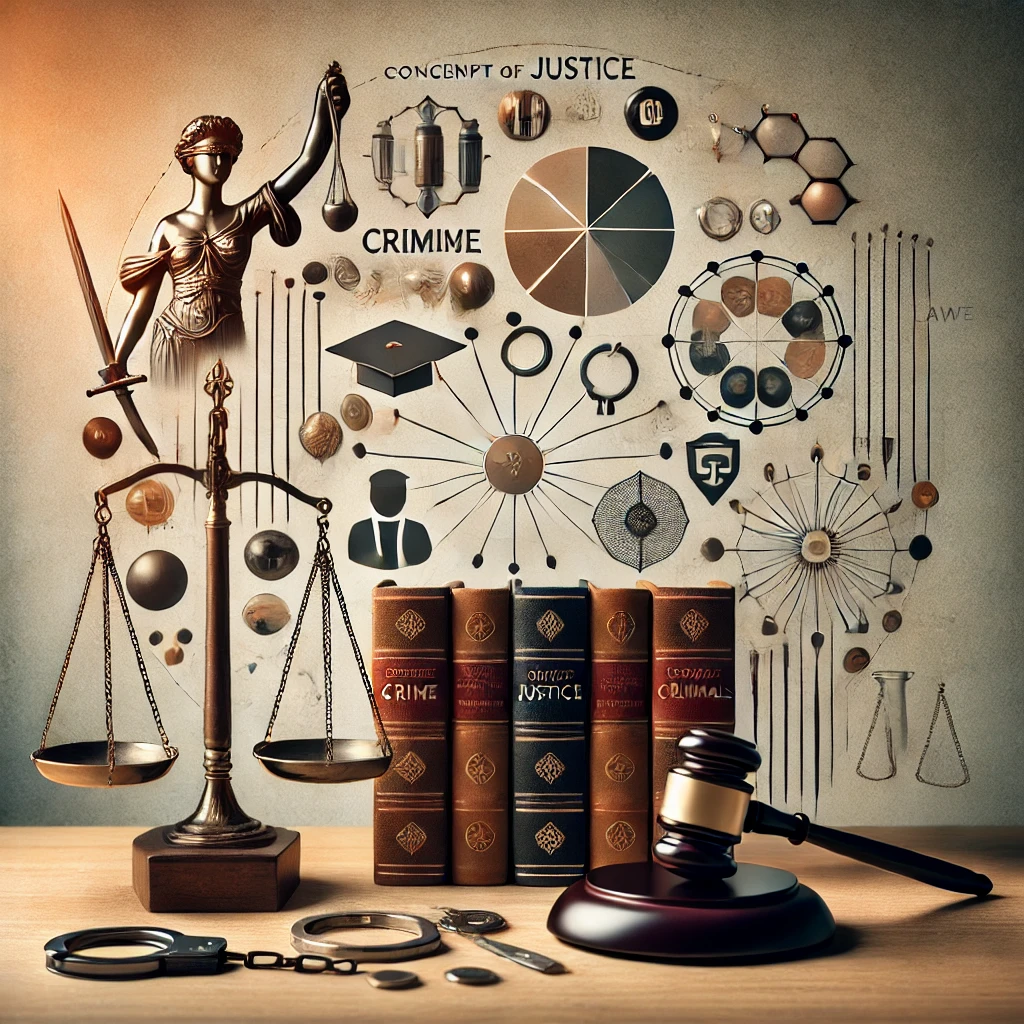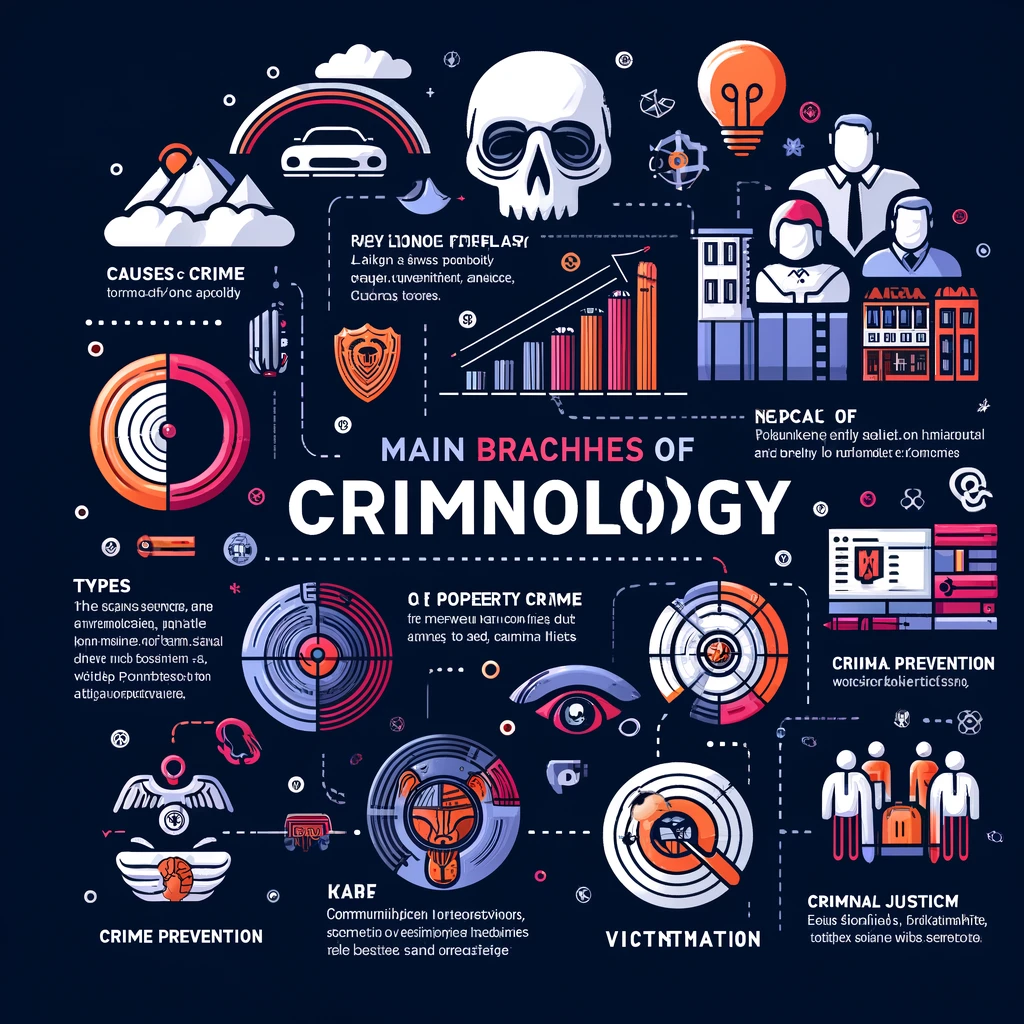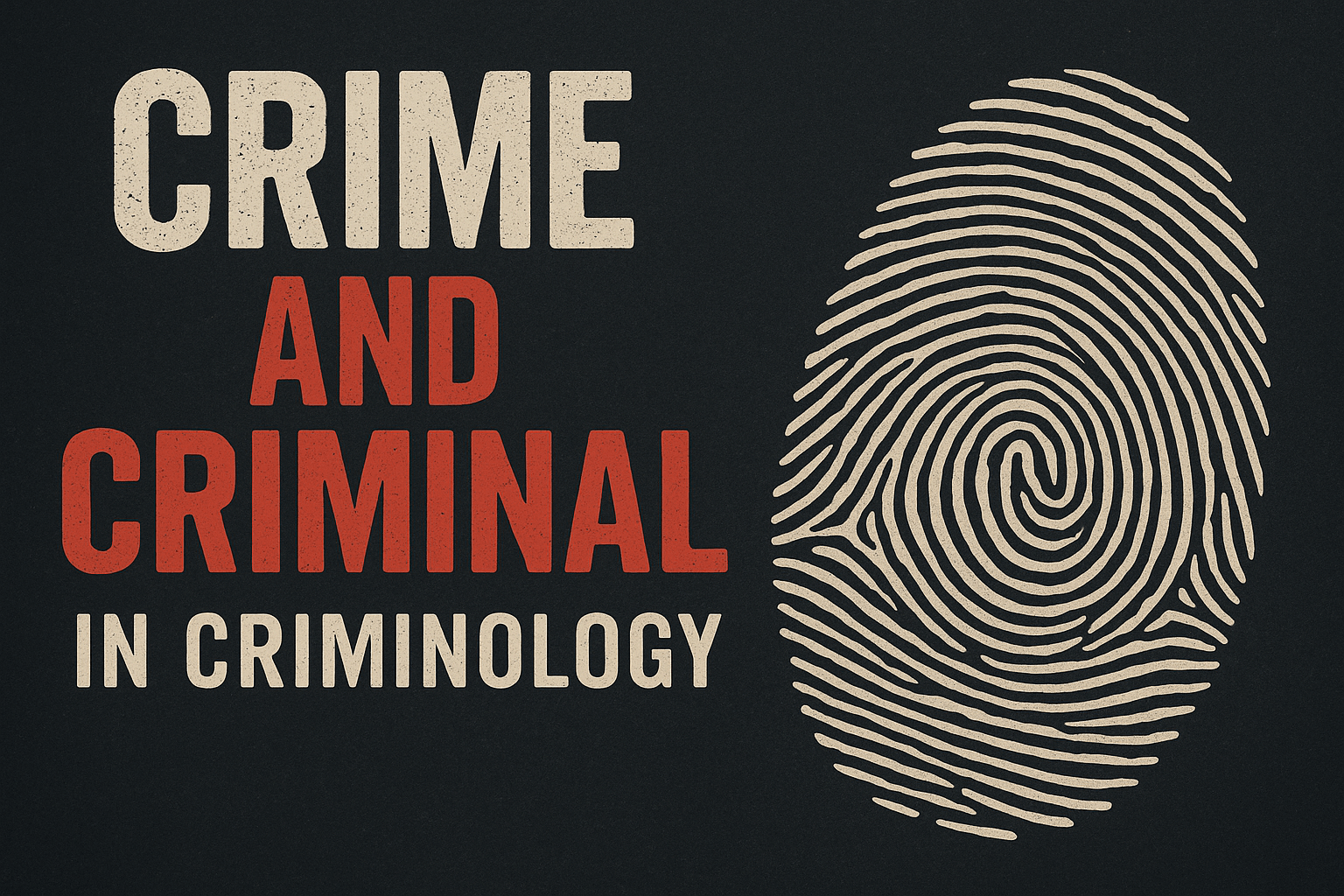Introduction
The topic of crime and criminals is one of the most analyzed and studied subjects in criminology. Criminology addresses various aspects that aim to understand the nature of crime, the reasons behind criminal behavior, and analyze these behaviors through a range of scientific theories. This article sheds light on the concept of crime and definition of criminals while presenting views of prominent thinkers such as Cesare Lombroso, Émile Durkheim, Robert Merton, and Edwin Sutherland to offer students and researchers a comprehensive perspective.
1. Definition of Crime
The definition of crime is based on identifying actions that are considered illegal or unethical, with this definition varying across legal, social, and psychological perspectives.
– The Legal Definition of Crime
From a legal standpoint, crime is defined as any act or omission that is unlawful, violates others’ rights or public order, and is subject to legal punishment. This definition encompasses both criminal and civil offenses, and it is based on the idea that crime is defined by laws that differ from one country to another.
– The Social Definition of Crime (Émile Durkheim)
Émile Durkheim sees crime as not only an illegal act but as behavior that contradicts socially accepted norms. According to Durkheim, crime is a natural component of every society and occurs even in the most advanced societies, viewing it as an indicator of social change and progress. Durkheim states, “Crime is not so much a social disease as it is a natural phenomenon in social life.”
– The Biological Definition of Crime (Cesare Lombroso)
From a biological perspective, Cesare Lombroso, one of the founders of criminology, posits that crime results from genetic and biological factors, with certain physical characteristics making some individuals more prone to criminal behavior. Lombroso introduced the idea of “born criminals” and asserted that certain physical features distinguish individuals with criminal tendencies, such as a pronounced skull.
– The Psychological Definition of Crime (Edwin Sutherland)
Edwin Sutherland proposed the concept of differential association, which suggests that criminal behavior can be learned through interactions with others in one’s environment. Sutherland argues that a person may become a criminal through continuous interaction with individuals who engage in criminal behavior, emphasizing that crime is a result of social influence rather than inherent nature.
2. Types of Crimes
Crimes vary in nature and can be categorized into several types based on their nature and motives:
– Violent Crimes
This category includes crimes involving physical violence, such as murder and assault. According to Cesare Lombroso, biological factors may increase the inclination of some individuals toward violent behavior, with some violent crimes potentially stemming from psychological and biological influences.
– Economic Crimes
Economic crimes include fraud, money laundering, and bribery, associated with illegitimate financial gain. In Robert Merton’s theory of strain, some individuals may resort to crime due to the lack of legal means to achieve economic goals in society.
– Cybercrimes
Cybercrimes include all illegal activities conducted via the internet, such as electronic fraud and espionage. According to Gabriel Tarde, cybercrime proliferation relies on imitation in the digital world, where individuals may be drawn to illegal activities influenced by others engaging in them online.
3. Definition of Criminals
Definitions of criminals vary depending on the perspective, whether legal, psychological, or social.
– The Legal Definition of a Criminal
Legally, a criminal is a person who has committed an act defined as a crime by law, and they are prosecuted and punished based on the crime committed.
– The Psychological Definition of a Criminal (Cesare Lombroso)
Lombroso suggested that some individuals possess inherent traits that predispose them to criminal behavior, such as aggressiveness and thrill-seeking. Lombroso referred to these individuals as inherently deviant, relying on individual characteristics to explain criminal behavior.
– The Social Definition of a Criminal (Robert Merton)
From a social perspective, Merton sees the criminal as a product of social strain, with individuals under economic or social pressure sometimes resorting to crime as a means of coping. Merton believes that crime results from society’s failure to provide sufficient legal opportunities for success.
– The Cultural Definition of a Criminal (Gabriel Tarde)
Gabriel Tarde emphasized that crime results from social influences, whereby an individual acquires criminal behavior through imitation, whether by imitating individuals within their social environment or through media influence.

4. Factors Contributing to Crime
The factors that lead to criminal behavior are varied and can be divided into:
– Psychological Factors
These include mental disorders and personality disorders. Edwin Sutherland emphasizes that interacting with a criminal environment may increase individuals’ tendencies to adopt criminal behaviors.
– Social Factors
These encompass family, friends, and community influence. According to Travis Hirschi’s Social Control Theory, strong social bonds can help prevent criminal behavior, while weakened bonds may lead to criminal tendencies.
– Economic Factors
Poverty and unemployment are known to contribute to crime. Robert Merton’s strain theory argues that economic disparities and pressures drive some individuals to choose illegal means to achieve their goals.
5. Theories Explaining Crime and Criminals
– Lombroso’s Biological Theory
This theory posits that genetic and physiological factors may make individuals more prone to criminal behavior, with certain physical characteristics distinguishing them from non-criminals.
– Durkheim’s Social Theory
Durkheim asserts that crime is an integral part of social evolution, representing a rejection by some individuals of the existing system, thus contributing to societal renewal and improvement.
– Merton’s Strain Theory
According to Merton, individuals experiencing economic and social pressure may turn to crime as a means of adaptation, particularly when they lack opportunities for lawful success.
– Sutherland’s Differential Association Theory
Sutherland argued that criminal behavior is learned through interaction with criminal environments, whereby individuals adopt criminal behaviors by learning values and practices from those around them.

6. Punishment and Sentencing for Criminals
Punishments may vary, including physical, psychological, and economic penalties, with sentences differing based on the type and severity of the crime. Rehabilitation programs aim to reintegrate criminals into society through psychological care and vocational training.
Conclusion
Summary: Understanding crime and criminals is a complex subject that requires considering legal, social, psychological, and economic aspects. The scientific understanding of crime and criminals highlights the importance of strategies for combating crime, enhancing social security, and developing mechanisms to prevent crime recurrence, ultimately contributing to a safer and more stable society.

